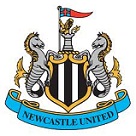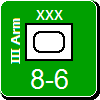Charbroiled
Posts: 1181
Joined: 10/15/2004
From: Oregon
Status: offline

|
I really don't see how this can be "gamey" when it was a concern for all navy commanders and some ships were specifically designed to do just that.
quote:
Nelson had said that the want of frigates would be engraved on his heart. He needed scouts equal to those they would have to meet, but if they were run down they could not get the information that was needed. It was useless to send a ship into a position of danger of being overhauled and taken.
The experience gained by American naval officers during the 1898 war with Spain was that there was very great need for scouts ; they had employed ocean liners for the purpose, and had found them extremely efficient. As a result it had been concluded that it would not be desirable to build vessels especially for such purposes. Such craft must be of considerable size — a ship of 3,000 or 4,000 tons was hardly equal to maintaining speed in heavy weather during long voyages at sea. The ocean liners were, therefore, best fitted as long-distance scouts, while destroyers would fill the position of small scouts for closer operations. They ascertained, however, that in order to find the enemy's fleet they had to cruise all over the West Indies. Many vessels were required to form the big fleet of cruisers necessary, and, therefore, they had come to the conclusion that they must depend on the ocean liners, keeping torpedo craft for close scouting.
By around 1910 it seemed probable that the protected cruiser would be modified, and her place taken, as far as speed is concerned, by a new type being developed, the Scout. As its name implies this type will be very fast, 23 to 25 knots, with large coal capacity and no protection. The Scout class is not designed to fight but rather to act as the eyes of the fleet. They were of good size, 3,000 to 4,000 tons displacement, with fine lines for speed. Their duties would be to discover and keep in touch with the enemy and to carry news to their own battle squadron; they would also be capable of destroying torpedo craft. As to unprotected cruisers and gunboats, while necessary in times of peace for general police of the seas and to show the flag in foreign ports, they are of no use in battle except against unarmored vessels.
The scout cruiser was a vessel conceived for a special purpose. It was an offshoot from the parent stem of cruisers. Its principal duties appear to be to get contact with enemy battleships or fleet, to ward off an attack of enemy destroyers upon own battleships and mine laying in battle. It is all eyes and no power.
and
quote:
US Navy cruiser design in the years leading up to 1920 was focused on two main types of new cruisers. The first was a class of scout cruisers which would eventually become the Omaha Class; the second was a new class of battle cruisers which was started, but never completed. By 1920, Scout Cruisers were classified as First Line Light Cruisers by the US Navy. The most outstanding US scout cruiser was certainly the Omaha class. Once naval aviation began to provide float planes for use on cruisers and battleships, the scout cruiser's role declined in importance so that none were built after about 1925
http://www.globalsecurity.org/military/systems/ship/scr.htm
Maybe it would have been more "historic" to use a CL or an Ocean Liner.
< Message edited by Charbroiled -- 5/13/2010 11:15:46 PM >
_____________________________
"When I said I would run, I meant 'away' ". - Orange
|
 Printable Version
Printable Version


 Interesting...
Interesting...  What is next? Sending AKs to scout deep inside enemy convoy routes? Sending AKs to test which enemy base is mined? Yes, you can play in whatever way you want, but some things are... well... gamey
What is next? Sending AKs to scout deep inside enemy convoy routes? Sending AKs to test which enemy base is mined? Yes, you can play in whatever way you want, but some things are... well... gamey 















 New Messages
New Messages No New Messages
No New Messages Hot Topic w/ New Messages
Hot Topic w/ New Messages Hot Topic w/o New Messages
Hot Topic w/o New Messages Locked w/ New Messages
Locked w/ New Messages Locked w/o New Messages
Locked w/o New Messages Post New Thread
Post New Thread